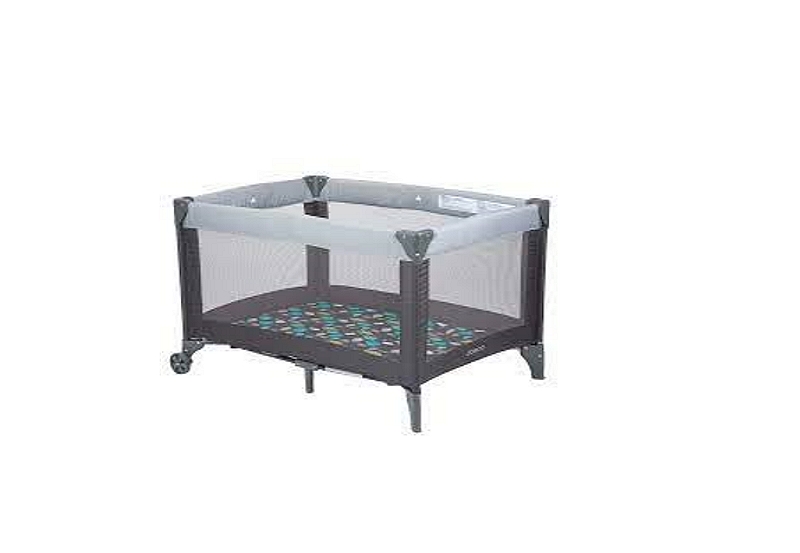In this blog post, you will learn how to put together a Cosco playpen. The steps are simple and easy to use. Read on.

Steps on How to put together a Cosco playpen
Step one: Lay the playpen on its side.
Step two: Attach each support pole to its respective hole in the mat with a screwdriver or drill and tighten until secure.
Step three: Collapse uprights into the base by rotating 90°, then lock securely as needed. Finally, you can use your new Cosco Playpen!
How do you get water stains out of a playpen?
You don’t have to give up on your playpen just because it has stains. There are several ways to get these out with household items. For example, you can use an oil-based stain removal product or mayonnaise for this purpose.
You should apply the solution and leave it overnight before removing any residue using a paper towel or cloth.
Finally, clean off with lukewarm water and dry immediately in sunlight if possible. Another option is to make a paste of baking soda mixed with hydrogen peroxide, allowing it to sit for an hour before scrubbing away the dirt spots that remain after washing thoroughly again with warm water.
This type of treatment will work well especially if there are heavy staining problems around the edges where moisture gathers when the baby is taking a nap.
You can also use vinegar or bleach, but be careful when using it with any fabric! As an alternative, you can simply rub the stains off by hand if they are fresh before placing the baby in the playpen again.
Can a baby sleep in a playpen instead of a crib?
No, a baby should not sleep in a playpen. A playpen is like a crib but it lacks the head and footboards that help keep your child safe and secure. When you put your infant into its bed, make sure they are on their back with no blankets or pillows to smother them.
Also, avoid any bumpers because these can pose hazards if your baby tries to move around too much while sleeping. For babies to have adequate space when they’re out of their cribs, use storage bins from Ikea which come in various colours so children won’t get bored inside their rooms!
Finally, place lamps near windows or outside lights within reach of infants who don’t know how far they can go on their own!
What is a pack n play mat made of?
Pack n playmats are made of a variety of materials. One common type is the foam material, which has been used for years and provides great comfort for babies.
Other pack n play pads may be made from plastic or cotton/polyester blends. For example, it makes sense to purchase a waterproof pad that can easily clean up any spills during feeding time while protecting your child’s mattress from moisture damage at the same time!
It also keeps you from having to wash the entire bed every time there is an incident, saving you both money and hassle in one fell swoop.
The best thing about these sheets: they’re available right here on Amazon with free shipping in many sizes and colours so finding something perfect for your little one won’t take much time at all.
How long can the baby use the pack n play?
Pack n play allows babies to sleep, rest and play. So the baby must get comfortable in their pack n play for them to enjoy all of what it has to offer. However, parents should also be aware of how long they can use a pack n play.
Here are some things you need to know:
The standard weight limit on most pack ‘n plays is 35 pounds or less (about 16 kg). Most manufacturers recommend transitioning your child out of his/her infant seat at around five months old.
However, this age differs depending on the manufacturer’s instructions as well as the height and weight limits recommended by consumer organizations like Consumer Reports. After reaching these milestones, infants can begin sleeping in a pack ‘n play.
Pack n plays are intended for babies up to two years of age or less, depending on the manufacturer’s specific guidelines.
Some parents choose to use them as they transition their child from an infant crib into a “big kid” bed but this is not recommended because it can result in injury if your baby falls out of the side.
Most manufacturers recommend transitioning children around 24 months old so that kids no longer need any additional protection against falling off the sides and have enough room to roll over onto their stomachs without getting stuck (which could lead to suffocation).
Check your owner’s manual before using after 30 pounds (about 14 kg) or 32 inches tall since some models do not support larger weights; these limits are usually listed in the manual.
Can 6-month-old sleep in pack n play?
Yes, most babies can sleep in a pack n play after they have reached the age of six months. Since your baby is almost at that point, you should not have any problems putting her to bed with a few blankets and their favourite lovey or stuffed animal.
If she wakes up crying in the middle of the night though, it might be best for you to hold off on letting her sleep alone if possible since some babies do need this extra comfort from mommy when they are used to sleeping next to us throughout these first several months!
